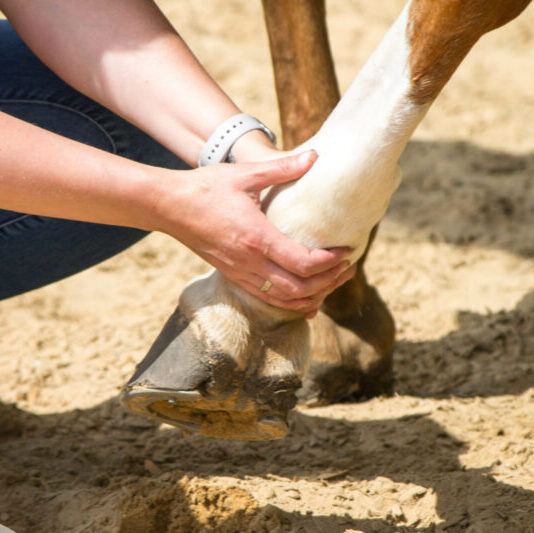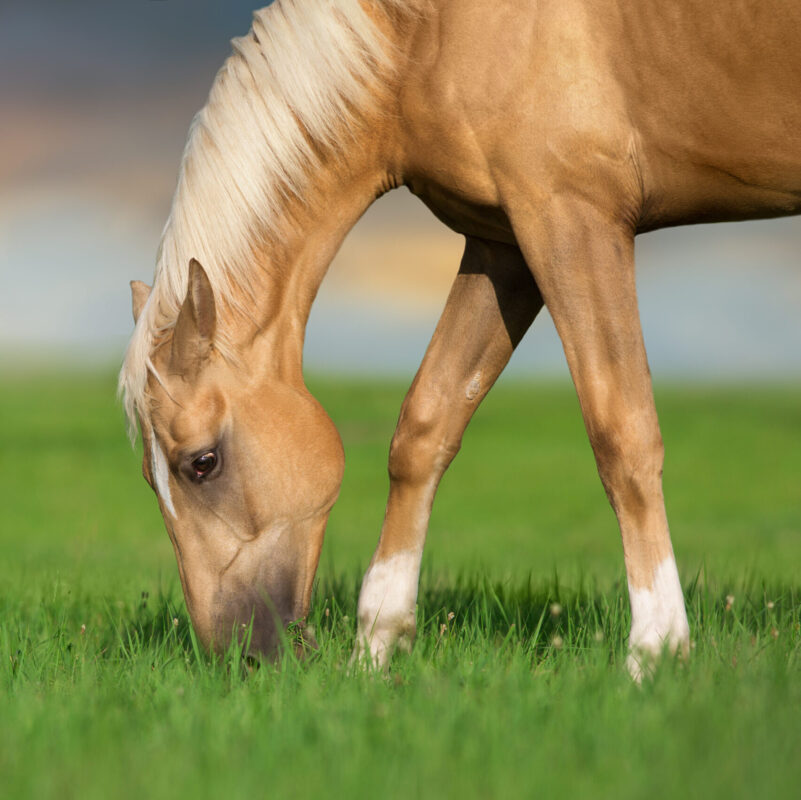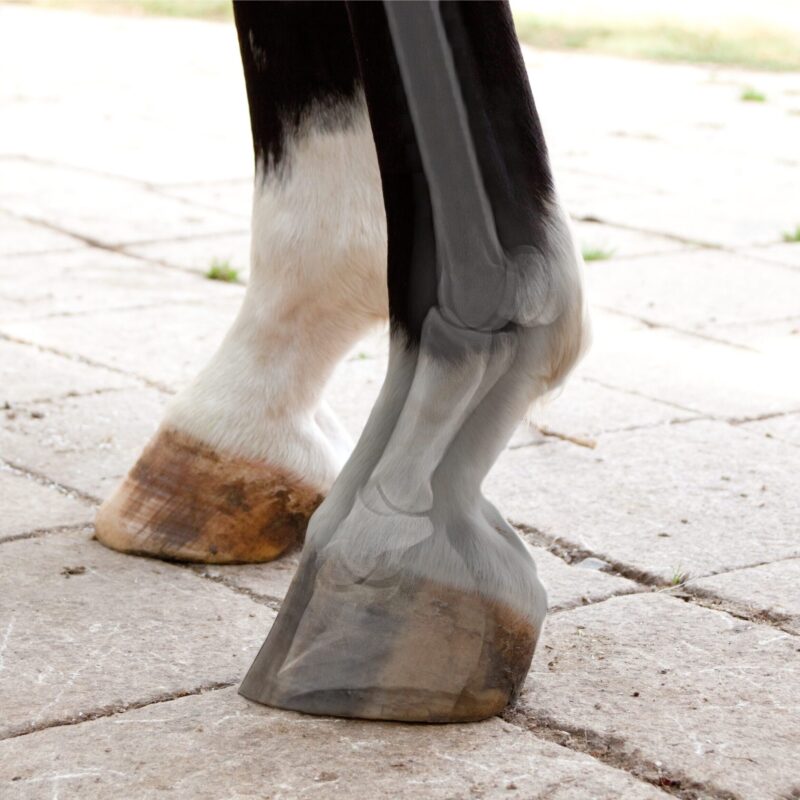Osteoarthrose
Osteoarthritis is a common cause of lameness in horses and responsible for up to 60% of lameness cases. It has been described as a chronic progressive joint disease leading to degeneration of the articular cartilage, subchondral bone and inflammation of the associated soft tissues of one or more joints. Most commonly, joints of the hind and forelimbs are affected such as the coffin joint, pastern joint, fetlock joint, carpal joints, cubital joint, tarsal joints or stifle joints. But also, the joints of the cervical spine and the back can be affected.

What causes Osteoarthritis?
Articular cartilage damage commonly occurs due to abnormal forces on healthy cartilage caused by instability or traumatic disruption of the soft tissue-supporting structures of the joint. The combination of abnormal force, lack of stability, and acute trauma cause synovitis and capsulitis of the joint leading to the release of proinflammatory enzymes and mediators, which deteriorate the ongoing inflammation.
Clinical Signs?
Clinical signs of equine OA include lameness, painfulness of the affected joint to or movement, reduced range of motion of the affected joint, heat, soft tissue swelling of the surrounded tissue of the affected joint, effusion within the affected joint, general stiffness and poor performance.


Who is affected?
Osteoarthritis can affect horses of all ages and breeds. Older horses are mostly affected. But even younger horses can suffer from osteoarthritis at a young age due to an increased load of exercise.
